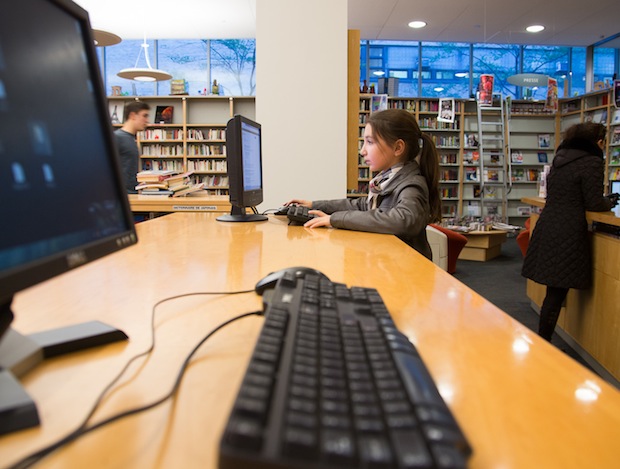“More children ages 1-5 know how to use a smartphone application than can tie their own shoe laces” is a something about which you may have heard this week if you were able to listen to “New Tech City” on WNYC public radio last Tuesday. This statement, made in the context of an interview about the impact of social media on child development with Dr. Ari Brown, the author of a study on this subject by the American Academy of Pediatrics, is definitely one which grabs attention. Three people have made reference to it in conversation with me these past few days.
What is particularly interesting, to my mind, is that no one with whom I have spoken has expressed the slightest doubt about the accuracy of this assertion or the slightest astonishment about the reality it conveys. Everyone seems to understand how our youngest ones, not to mention everyone born into the digital world over the last 15 years, are the natives of a technological landscape which is fundamentally different from what it was in the 20th century, and irrevocably so. The questions the statement raises are of another nature.
A student does a search on the computer in the Secondary Library.
In a thought-provoking and all-too-short exchange I had with one parent, my interlocutor referred to the apps and laces example to illustrate the more general challenge facing families and schools. There are those among us who would argue, she said, that we should stick with shoe laces and forget smartphone apps. Whether at home or in class, we must expect children to master that body of knowledge and skills which has always been important. Technology, no matter how pervasive it might be in society at large, should not be allowed to displace these essential elements, elements which have been championed since Socrates.
And then there is the contrary view, that we should espouse apps and abandon laces. Who needs laces anyway, goes the argument, when one can buy shoes without them and in any case could always watch a video on youtube which would provide all the answers! Apps, according to this point of view, encapsulate the present and the future: we cannot afford to pause in our efforts to embrace the technological revolution and must never look back.
The answer, our parent and I both enthusiastically agreed, lies betwixt the two. On the one hand, such fields of knowledge as science, mathematics, and languages, as well as such skills as critical thinking, problem-solving and teamwork remain more relevant than ever, especially in the extraordinarily unified, interdependent world in which we are raising our children and educating our students today.
On other hand, it is clear that new technologies have inaugurated a profoundly different era for learning and teaching, new in terms of what and how learning can and should take place, and new too in terms of what is possible for teaching to accomplish in support of each child’s individual needs and aspirations. Apps and laces, and I mean these terms not just literally, but figuratively as well, cannot be seen in opposition to each other. Mastering one is not more important than mastering the other. Integration is all.
About the Author :
Sean Lynch was Head of School at the Lycée Français de New York from 2011 to 2018, after having spent 15 years at another French bilingual school outside of Paris: the Lycée International de St. Germain-en-Laye. Holding both French and American nationalities, educated in France (Sciences Po Paris) and the United States (Yale), and as the proud husband of a French-American spouse and father of two French-American daughters, Sean Lynch has spent his entire professional and personal life at the junction between the languages, cultures and educational systems of France and the United States. In addition to being passionate about education, he loves everything related to the mountains, particularly the Parc National du Mercantour.


